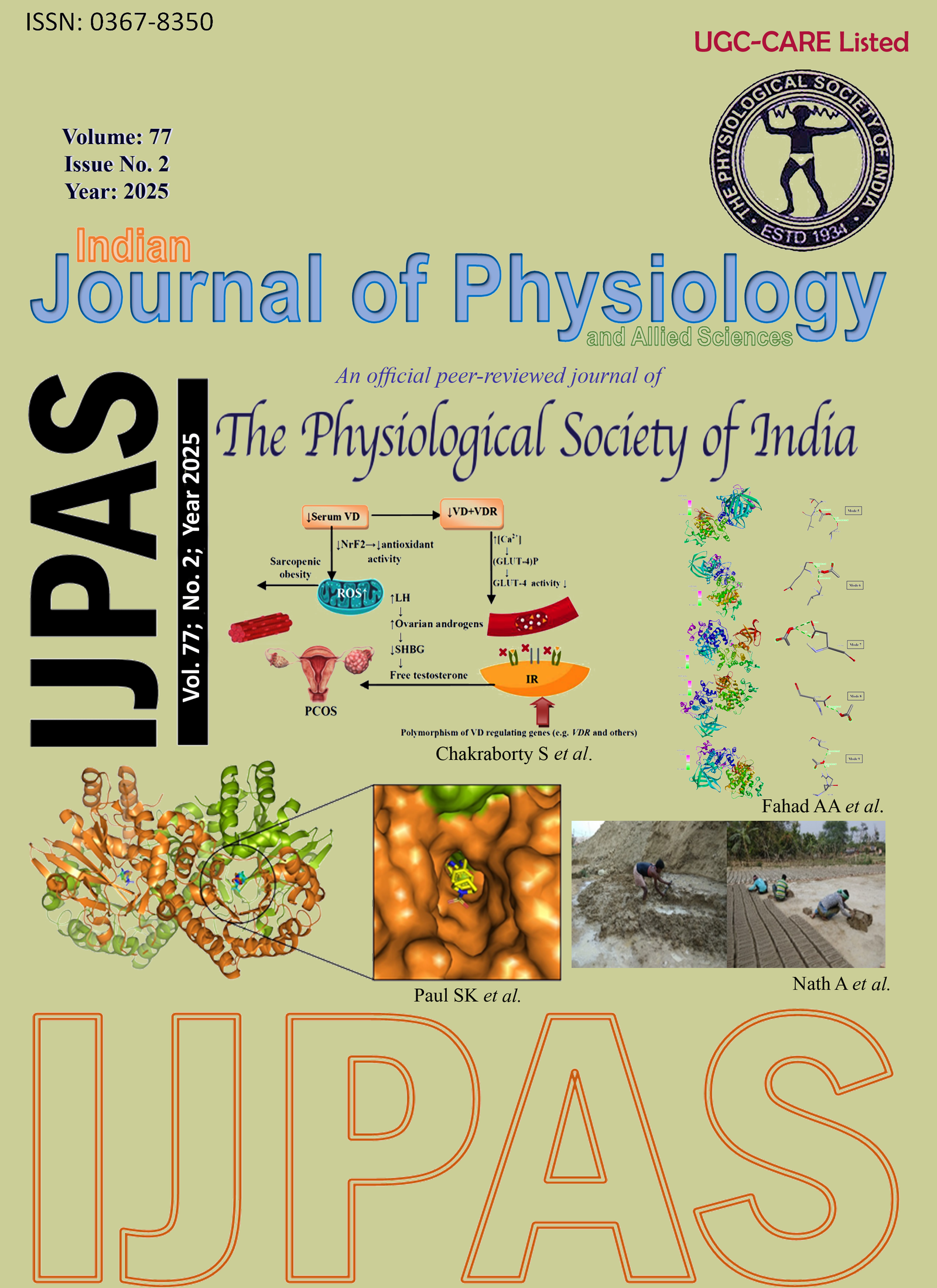Assessment of fugitive personal noise intensity exposure among open-type hot forging industrial workers
DOI:
https://doi.org/10.55184/ijpas.v77i02.324Keywords:
Open-type hot forging, fugitive noise intensity, noise pollution, time weighted averageAbstract
Background: Fusitive noise exposure is a major occupational hazard for workers in open-type hot forging industries I and II, which manufacture products like plain shafts, hubs, big nuts, spindles, piston rods, seat/bearing/gaskets, gear rings, etc., using two-ton and one-ton hammers.Objective: To assess the fugitive personal noise dose intensity exposure among exposed workers.Methodology: The personal noise intensity exposure was measured by using a noise dosimeter, among exposed workers for 8 hours full shift.Results: The personal noise intensity exposure, time-weighted average (TWA),in both industries individually and combined were 91.87 ± 1.47 dB(A), 93.17 ± 1.65 dB(A), and 92.56 ± 1.68 dB(A), respectively. The LEQ noise intensity for both industries individually and combined data were 94.22 ± 2.03 dB(A), 96.77 ±2.64 dB(A), and 95.59 ± 2.67 dB(A). Both TWA and LEQ values between Industry I and II were different and this was statistically significant (p<0.05).The Lpeak noise intensity in linear scale for Industry I, II and combined data were 139.78 ± 8.03 dB(Z), 141.35 ±6.76 dB(Z), and 140.62 ± 7.33 dB(Z), respectively.Conclusion:The noise intensity was above 90 dB(A) as per statutory guidelines of the Factories Act 1948, and Mines Act 1952. Preliminary findings of this study indicate that the workers may develop stress and health effects like Noise Induced Hearing Loss (NIHL) if proper actions are not followed. Accordingly, suitable intervention suggestions were given to them. The results were further compared with World Health Organization (WHO) and Occupational Safety and Health Administration (OSHA) standards.
Downloads
Published
How to Cite
Issue
Section
License
Copyright (c) 2025 Debasis Chatterjee, Karri Venkata Santhee Devi, Dhananjayan V, B Ravichandran, Dr. Geethu Mathew

This work is licensed under a Creative Commons Attribution-NonCommercial-NoDerivatives 4.0 International License.

